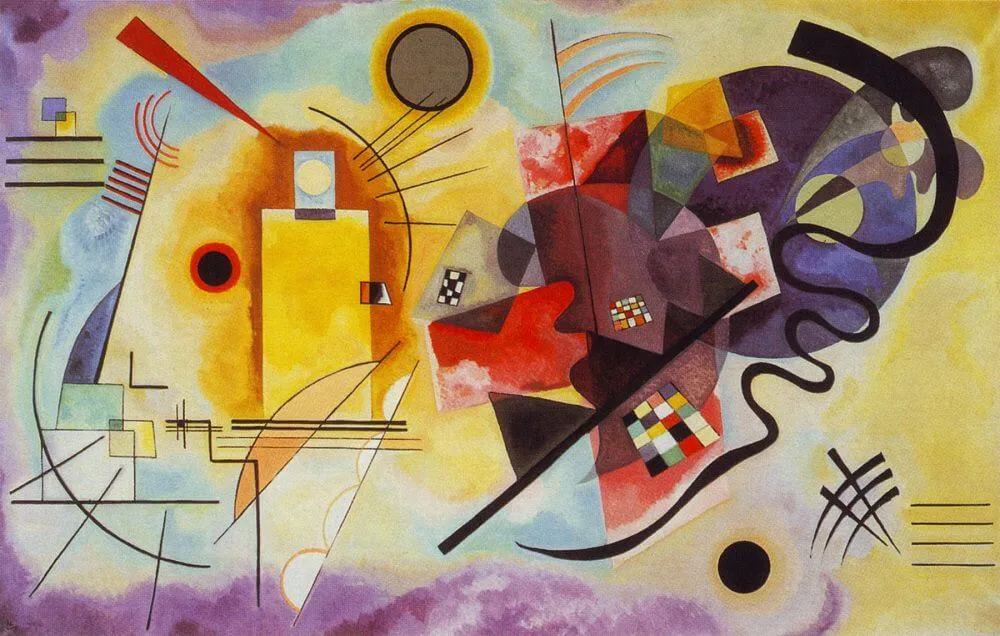Wassily Wassilyevich Kandinsky was a Russian painter and art theorist, known as the pioneer of abstract art.
This is one of his most famous paintings Yellow-red-blue

source
So, how does one painter can be played? For answer and actual try, keep reading :)
Kandinsky was synesthete.
Synesthesia is a neurological phenomenon in which real information received through one sense, automatically and unconsciously evokes additional experience of another sense or more senses. The ancient Greeks described this simultaneous permeation of multiple senses by a word that combines the simultaneity of experience and perception (syn+aisthesis -together+perception).
Neurologists have found that in people who have this ability, certain nuclei in the brain are connected in a different way than in most people.
Researches say that in the case of a synesthete, two senses are usually connected, and people with whom three or more are connected are very rare.
People who have this ability can, for example, hear some music and see its shape at the same time; they always have the same experiences, meaning, same music, same shape.
For them, the experience of the synesthesia is very realistic and can be compared, for example, with the experience of touch.
Although this happens all the time, people with synesthesia are aware which perceptual part comes form real stimulus and which is correlate.
Synesthetic experiences are unique to each person. Interesting is that a person may be unaware of his abilities because she/he has always perceived the world that way, and takes for granted this condition, so it comes to realization that something is different when discussing about perception with other people.
This online tool lets users hear what Kandinsky might have heard when he painted Yellow-red-blue. All of the music in the experiment was written by AI, which was trained based on what is known about Kandinsky.s condition.
Not that we can really understand how it feels, but can give some idea and is fun :)
Jimi Hendrix was synesthete too, he used to describe chords and harmonies as colors. It is said that he called his song Purple haze by that name because he saw his song as a purple mist; there are also other versions of how song got its name but will pass discussing that... ;)
Here are some other scientists and artist that were synesthete also:
Nikola Tesla sound/color
Leonard Bernstein - timbre/color
Eugen Bleuler - phonemes/color
Richard Feynman - grapheme/color
Franz Liszt - music/color
Richard Wagner sound/color
When I was doing research for this topic, noticed that musicians are outnumbering other professions; hmmm @mipiano noticed anything unusual about your perception? ;D
Enjoy the experiment and join spread the vibes of science by sharing your fun experiences and knowledge :)
